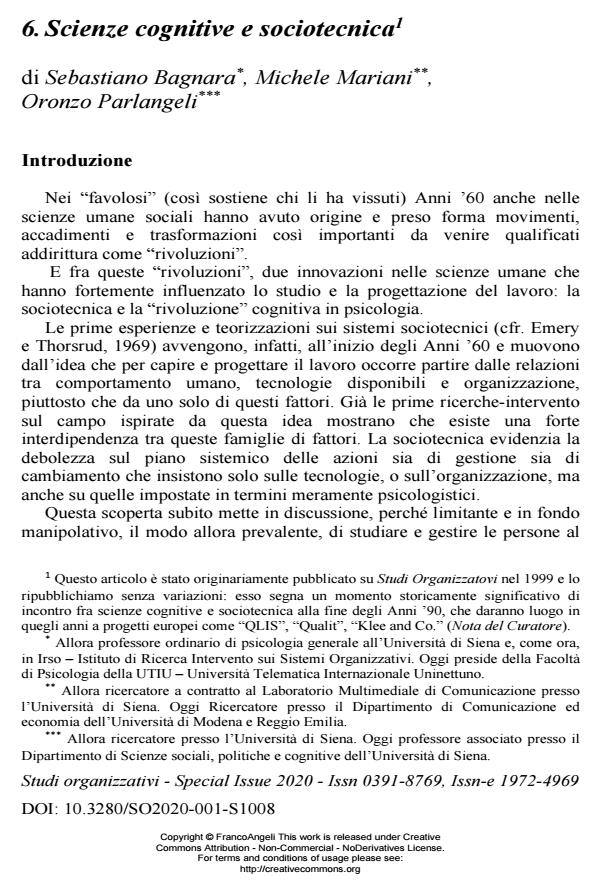Scienze cognitive e sociotecnica
Journal title STUDI ORGANIZZATIVI
Author/s Sebastiano Bagnara, Michele Mariani, Oronzo Parlangeli
Publishing Year 2020 Issue 2020/suppl. 1
Language Italian Pages 16 P. 126-141 File size 267 KB
DOI 10.3280/SO2020-001-S1008
DOI is like a bar code for intellectual property: to have more infomation
click here

FrancoAngeli is member of Publishers International Linking Association, Inc (PILA), a not-for-profit association which run the CrossRef service enabling links to and from online scholarly content.
Sebastiano Bagnara, Michele Mariani, Oronzo Parlangeli, Scienze cognitive e sociotecnica in "STUDI ORGANIZZATIVI " suppl. 1/2020, pp 126-141, DOI: 10.3280/SO2020-001-S1008